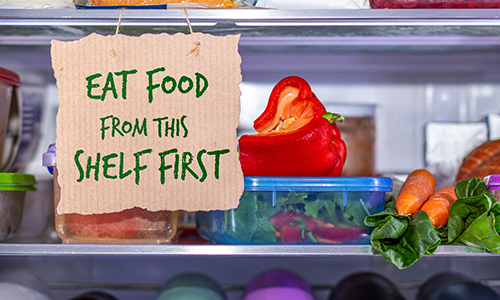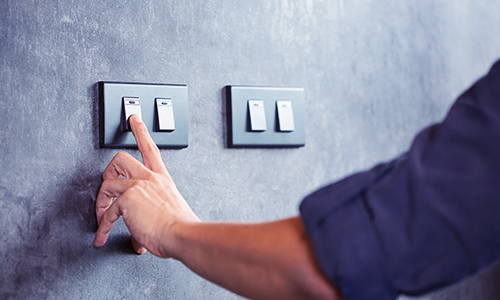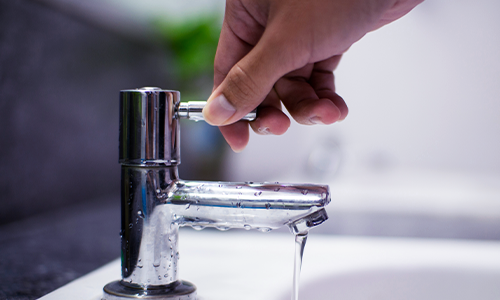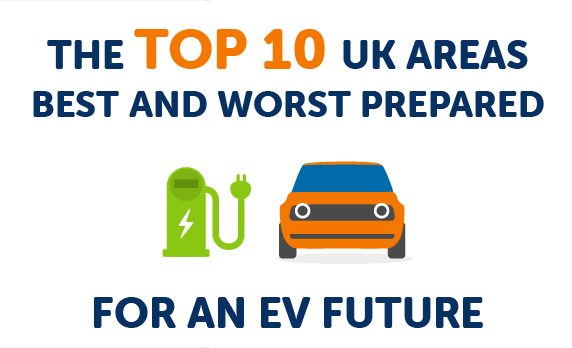Sustainability begins at home – 10 tips to help the planet (and your pocket!)

The future of the planet is an important topic and, because it’s such a big, global issue, sometimes it feels as if there’s nothing we as individuals can do. But the truth is we can still make a difference to things like global warming, pollution and our carbon footprint if we all make our own little worlds more eco-friendly.
All the things we do at home can have an impact globally, and it needn’t take much to make those little differences - and might even save you some money too! Here are 10 simple ways that you can help make your home a more sustainable place to be.
1. Reduce food waste
A shocking 4.7 million tonnes of edible food was wasted in 2021/22 in the UK. As well as reducing our carbon footprint by lessening excessive food production, transport, processing etc, the average UK family could save £83 a month by reducing their food waste! So, how can you make a difference?
- Plan your meals, make a shopping list and stick to it
- Keep food correctly chilled or frozen so it doesn’t go off while you’re waiting to eat it
- Organise your fridge and larder so that older food gets used up first
- Think twice about throwing tired looking fruit and veg away. There are lots of great recipes for soups, desserts and snacks that don’t need your ingredients to be fresh from the shop
- Don’t buy more than you need. It’s tempting to make the most of multibuy offers, but it can be a false economy if that food gets wasted

2. Cut out single-use plastic
According to WWF, 14 million tonnes of plastic ends up in our oceans every year, polluting the sea and harming marine life. Think of all the plastic packaging that comes into your home: the carrier bags, coffee cups, drinks bottles, takeaway cartons, food wrappers, parcel packaging… the list goes on.
Supermarkets have made it easier to buy unpackaged fruit and veg and scan your own items, so take a reusable bag when you go food shopping, scan as you go, and put your groceries straight in. Zero waste shops go even further. You can take your own containers and stock up on everything from nuts and dried pulses to toiletries and cleaning products.
Carry your own flask for water or hot drinks and save on plastic bottles and cups. If you have a takeaway, don’t throw the plastic containers away. Put them through the dishwasher and use them again, e.g. to freeze your home cooked meals, store dried goods or keep your kitchen drawers in order. Reusing any plastic container just once is a step in the right direction.
3. Wipe out the wipes
Another major pollutant littering our shoreline is wet wipes. The Marine Conservation Society found an average 19 used wet wipes per 100m of beach around Britain’s coastline.
Some wet wipes contain plastic that prevents them from breaking down in water the same way that tissue paper does, so even before they reach the sea, millions of them clog up our sewage systems, causing costly and unpleasant blockages
The golden rule is ‘Don’t flush wet wipes down the loo!’ Better still, find an alternative to do your cleansing. That applies to wipes you might use for domestic cleaning too. When shopping for cleaning products and toiletries in particular, look for eco-friendly, biodegradable products.
4. Insulate your home
Heating our homes is a major contributor to global warming. Most domestic heating is powered by burning fossil fuels, which pollutes the atmosphere with greenhouse gases, and the heat that escapes through the roof and windows warms up the air above us. Reducing the amount of heat that escapes from your home helps to tackle both these problems.
You can start by insulating the roof, which might not cost as much as you think, and makes a big difference. You may be eligible for a grant for insulating your loft and walls too - take a look at the ECO scheme for more information. For an even more heat-efficient home, replace old windows with double or triple-glazed units. This can be an expensive initial outlay, but may save you money on your heating bills in the long term, and can reduce your carbon footprint straight away.
5. Hit the ‘off’ button
Turning things off is a good habit to get into at home if you want to reduce your carbon footprint. Lights, heaters, TVs, consoles… if you’re not using them, make sure they’re not using energy. If you can turn an appliance right off at the wall without losing programmed settings, do so, because they’ll still be using power in standby mode.
Small changes can make a big difference over time. Try turning your thermostats down by one degree. When you make a hot drink, only boil the amount of water you need.
For the biggest win in terms of emissions and climate change, you could also consider making the change to a renewable energy supplier - Ofgem has some useful information about the switching process if you're concerned about any aspects of making the change.

6. Switch to LEDs
Leaving lights on around the house is a common issue in family homes, but you can reduce the problem (and your electricity bill) by replacing all your old lightbulbs with LEDs. These use at least 70-80% less electricity than the equivalent tungsten filament bulbs, and they can last over five times longer than a halogen bulb, so switching to LEDs will mean you’ll consume less energy and fewer bulbs too.
As for leaving lights on when there’s no-one in the room, you can switch to smart light bulbs which you can programme to turn off when a room is empty and control via an app on your phone.
7. Save water
It’s hard to imagine that a country with as much rain as the UK can suffer water shortages, but that is the case and it’s growing more severe. In addition to that, the average person in the UK uses 70% more water per day than in 1985, and every drop of water that comes into our homes requires energy to get it there and take it away, so it increases your carbon footprint. Here are some simple ways that you can reduce your household water consumption:
- Spend less time in the shower
- Fit your toilets with a more economical flush
- Wash up in a bowl rather than running water down the plughole
- Don't run your dishwasher until it's full
- Harvest water for the garden in water butts

8. Grow your own
Talking of gardening, there’s lots you can do for the environment literally in your own back yard. Plants take CO2 out of the atmosphere and turn it into oxygen and gardens provide habitats for birds and insects, which encourages biodiversity, which is so important for the balance of nature.
One of the most satisfying ways to use your garden is to grow your own fruit and veg. Even if you don’t have a big enough plot for a vegetable patch, there’s lots you can grow in pots and grow-bags. Nothing tastes quite like a tomato or carrot you grew yourself, plus there are no food miles and it doesn’t come wrapped in plastic either. Good for you, good for the planet.
All keen gardeners know the value of a compost heap. Rather than throwing away your peelings, egg shells, coffee grounds etc, compost them instead and they’ll turn into rich fertiliser for all your garden plants.
9. Eat less meat
You might not be ready to go vegan but you can cut back on the amount of meat you eat without feeling like you’re missing out. The meat industry is a major contributor to greenhouse gas emissions, so if we all eat less meat (or change the types of meat we eat), we could make an important difference.
You could start by limiting yourself to meat in your evening meal only and then try going meat-free on certain days of the week. There are hundreds of delicious vegetarian and vegan recipes that will add variety to your diet, make great use of those vegetables you’ve been growing and leave you feeling good about yourself.
10. Throw less away
We may be a lot better about recycling these days, but it still takes fuel and energy to come and collect your recycled waste and process it. So maybe consider if you need to throw it away in the first place?
If you have something in your home that no longer serves a useful purpose, think about whether it can be repurposed or upcycled into something useful. Used tins, bottles and jars, for example, can have a multitude of other uses. Old clothes can be cut up and used as cleaning cloths, or even – if you have the sewing skills – redesigned into something new. And furniture can always be painted, cut down and reassembled into something you like with a few basic DIY skills.
Once you’ve got your eco-friendly home in order, make sure it’s protected with the appropriate level of contents and buildings insurance. You can find all the information you need on our Home Insurance page.
You might also be interested in
The UK Electric Vehicle revolution
Which UK towns, cities, and regions are best- and worst-prepared for an EV future?
Understanding your home cover and when it applies
Take a look at our tips & keep your home covered.

